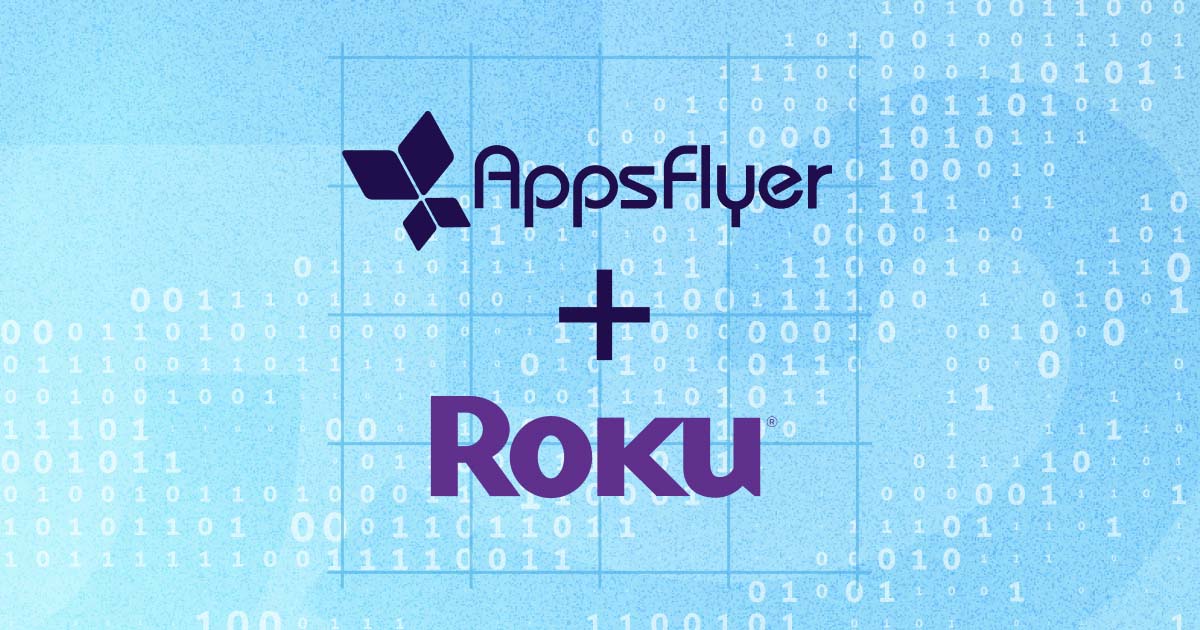
SKAN 4.0: Industry perspectives
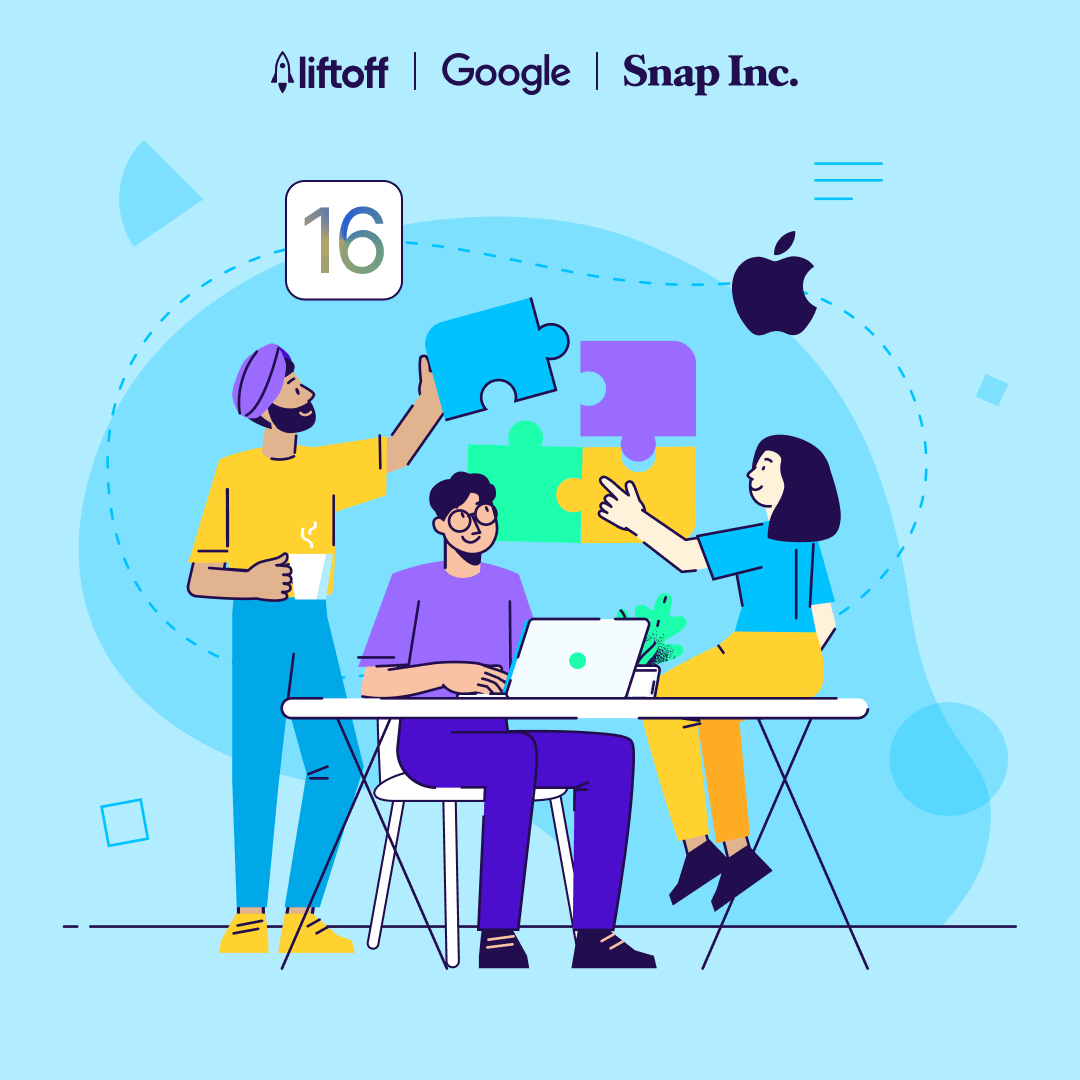
SKAN 4.0. is one of the hottest topics in the app marketing space these days. It’s also one of the most misunderstood.
When Apple unveiled its new-and-improved SKAdNetwork 4.0 at WWDC 2022, the mobile marketing industry as a whole was unsure of what to make of this new solution. On the one hand, it offered improved capabilities, but on the other left even seasoned advertising professionals baffled about how best to use them.
With these changes directly affecting how advertisers measure and optimize their iOS campaigns, there has been a lot of talk about what mobile app marketers and developers think about the effectiveness of SKAN 4.0. However, the consensus among ad networks has remained decidedly less clear — and they play a vital role.
To bring this perspective to light, we chatted with our partners at Liftoff, Google, and Snap about all things SKAN 4.0, including how they perceive the changes that have come with it, how they plan on utilizing the new capabilities going forward, and how mobile measurement partners (MMPs) can continue to support better iOS campaign optimization and ensure readiness for future SKAN versions.
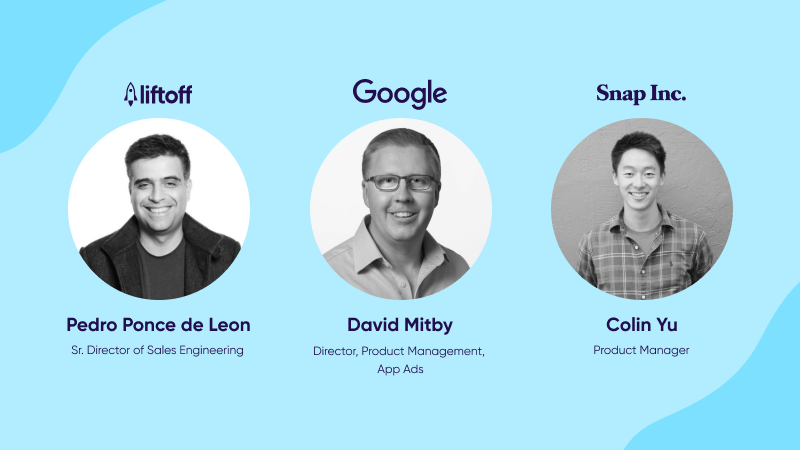
What do SKAN 4.0 changes look like from the ad network side?
To kick things off, we asked our partners to share what they think about the changes that have come with the advent of SKAN 4.0 and the implications of these new capabilities for both ad networks and advertisers.
We broke it down into four main areas: improved lifetime value (LTV) measurement, support for web-to-app attribution, crowd anonymity, and campaign dimension reporting.
Here’s what they had to say.
Improved LTV measurement
SKAN 4.0 allows advertisers to receive up to three postbacks, each based on a different activity window — 0-2 days, 3-7 days, and 8-35 days, respectively. This enables advertisers to understand how users engage with their app up to 35 days after installation — a major step forward compared to previous SKAN versions.
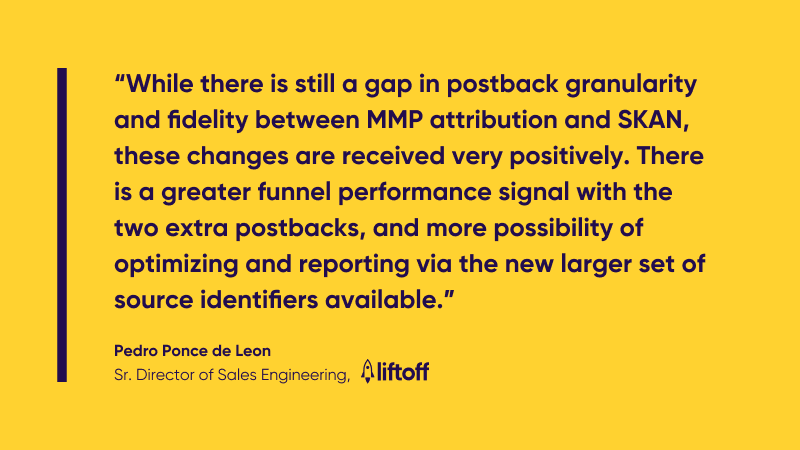
SKAN 4.0 also added a new set of “coarse-grained” conversion values split into low, medium, or high, to indicate different levels of user engagement and provide at least partial attribution data in cases where the privacy threshold is not met. This is also beneficial for ad networks as it enables them to gain a clearer understanding of how the users they help advertisers acquire are interacting with the advertiser’s app
Support for web-to-app attribution
One of the main limitations of previous iterations of SKAN was the lack of support for web-to-app attribution, as it meant that some key acquisition channels for marketers were not covered. With SKAN 4.0, Apple has added support for web-to-app attribution for Safari, which is the mobile browser of choice for over 90% of iPhone users.
At Google, this was a welcome change, as previous versions of SKAN did not support Google web Ads.
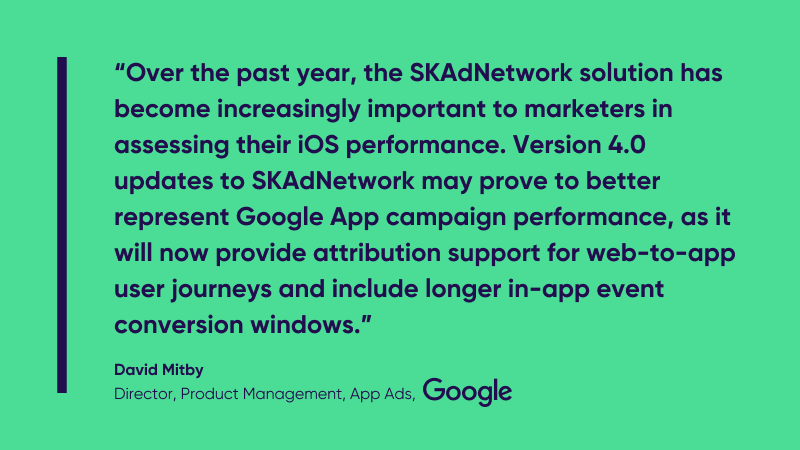
Crowd anonymity
SKAN 4.0 introduces the concept of “crowd anonymity” as a new term for “privacy thresholds” with four tiers: 0, 1, 2 and 3. Apple determines which crowd anonymity tier each install belongs to and can drop one or more of the following fields based on the tier — fine-grained conversion value, coarse-grained conversion value, source identifier, or source app ID.
Snap maintains that expanding to four tiers of crowd anonymity will only serve to help advertisers meet increasingly stringent privacy requirements.

Campaign dimension reporting
In previous versions of SKAN, campaign IDs were limited to two digits, meaning ad networks could only assign an ad a number between 0-99. In SKAN 4.0, the campaign ID has been rebranded to the “source identifier” and can now contain up to four digits, translating to up to 10,000 values. This means that ad networks now gain a significant advantage by having better granularity in campaign dimension reporting.
Liftoff is optimistic that the two extra digits will indeed provide more detail, although some blind spots remain to gain a completely accurate picture of campaign performance.
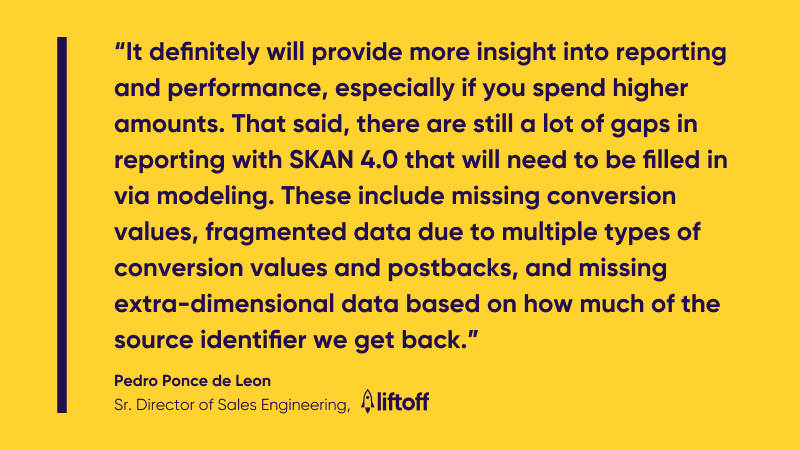
Liftoff also shared their thoughts on how they think advertisers can make use of the extra digits for more accurate iOS campaign measurement.
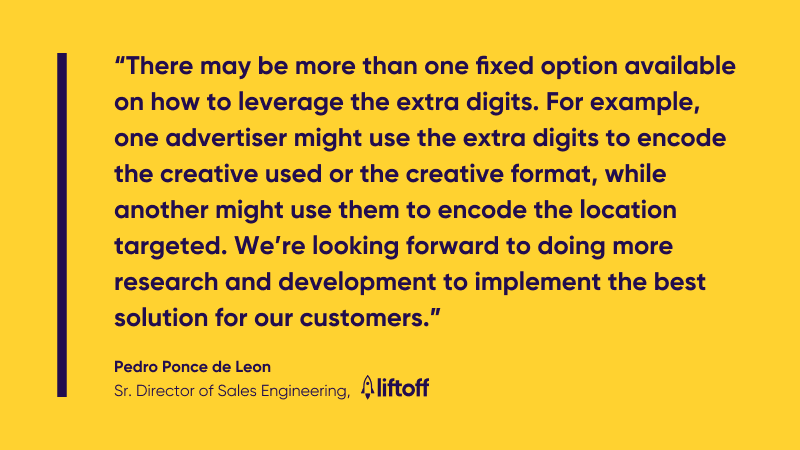
Supporting advertisers and ad networks alike
Truly effective solutions can’t be created in a vacuum. That’s why we took a collaborative approach to developing our own SKAN 4.0 solutions, by researching and engaging with industry leaders such as Liftoff, Google, Snap, and all other major ad networks. The result is a solution that is aligned with best practices, prioritizing unparalleled accuracy in iOS measurement while preserving user privacy.
In addition, we chose to proactively share the various features of our solution prior to its release, helping ad networks and advertisers educate themselves on how best to leverage SKAN 4.0 and stay ahead of the curve. As a leading MMP, we saw this as a critical step in supporting players across the mobile advertising spectrum to help them educate themselves on best practices and take full advantage of the new capabilities, some of which include:
- Enabling advertisers to easily configure and use four different conversion value schemas (i.e. two schemas for the first postbacks, one for the second, and another one for the third postback).
As the first MMP to introduce this capability and offer additional dimensions of measurement, we’re confident that advertisers will be able to maximize their users’ LTV measurement while empowering our ad network partners to better optimize app campaign performance.
When it comes to how advertisers should set up their conversion value schemas, Google advises that it’s best to keep in mind which events and values are of the highest priority.
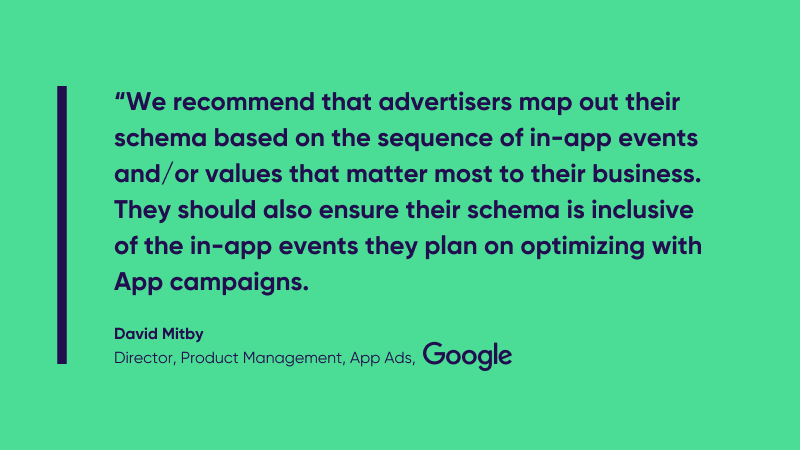
If an advertiser is unsure where to begin, Google recommends starting with an in-app funnel approach, which encodes both shallow and deep in-app events that are impactful to their business.
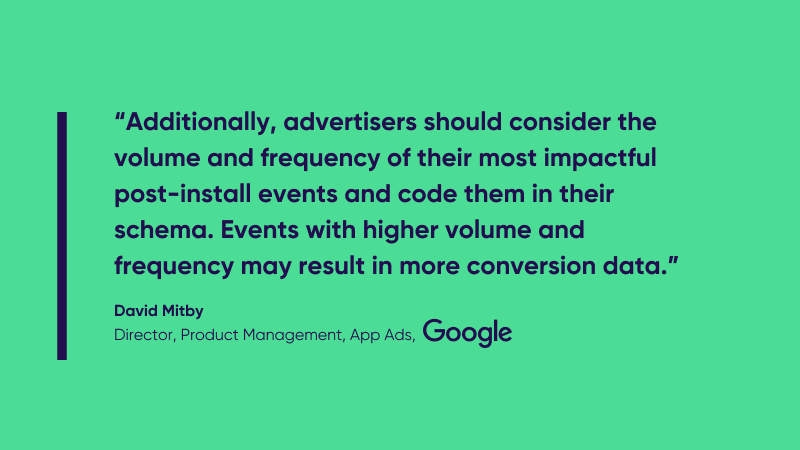
2. Allowing each measurement window in SKAN 4.0 to have its own configuration, as user behavior may change over time and each window represents a different time frame. This provides ad networks with more accurate information about app user behavior in their reports.
3. Enabling advertisers to lock the measurement window in SKAN 4.0 according to events that are meaningful for their app. This enables both ad networks and advertisers to receive postbacks sooner, increase data freshness, and optimize their campaigns more effectively.
4. Making it easier for partners to translate SKAN conversion values into user actions that took place in the advertiser’s app, by providing a seamless schema mapping API and Postback Macros.
Bridging the gap between ad networks and advertisers
Typically, ad networks receive postbacks with conversion values that range from 0-63 for fine-grained conversion values and “low”, “medium”, or “high” for coarse-grained conversion values. In order to optimize their campaigns effectively, it’s essential for ad networks to understand what these conversion values actually mean.
To address this challenge and simplify the communication between advertisers and ad networks, AppsFlyer is introducing the SKAN 4.0 Conversion Value Mapping API, allowing ad networks to easily translate the meaning of each SKAN 4.0 postback they receive from Apple and view the mapping of conversion values for a particular app. This helps streamline the flow of information between advertisers and ad networks and makes it easier to measure and optimize the effectiveness of mobile marketing campaigns.
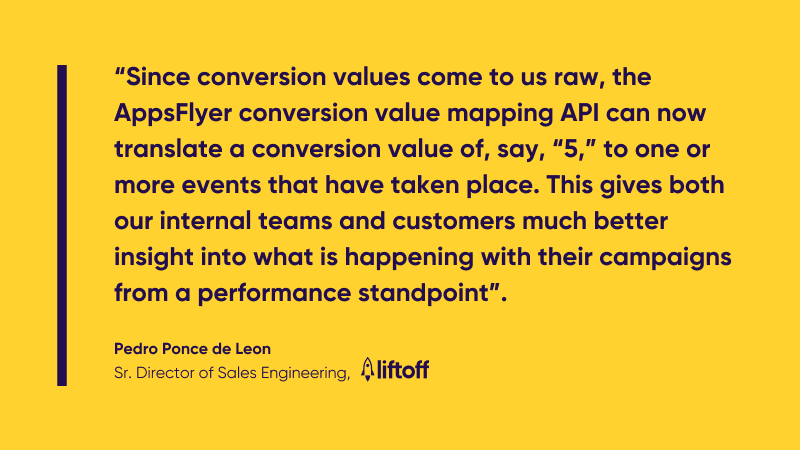
AppsFlyer’s conversion value mapping schema supports all enhanced SKAN 4.0 capabilities, including the four different schemas, three postbacks, and lockWindow functionality. Our ad network partners can leverage the new version of the API to receive the mapping of the conversion value schema.
To enable more flexibility, AppsFlyer supports additional methods that enable ad networks to receive postbacks directly from AppsFlyer with the translated conversion value, allowing for seamless integration of SKAN 4.0 into existing mobile marketing strategies.
Preparing for today’s needs and tomorrow’s possibilities
Although only the great minds at Apple know exactly what is coming next, it’s clear that the SKAN framework is not going anywhere — an assessment that is echoed by our partners as well.
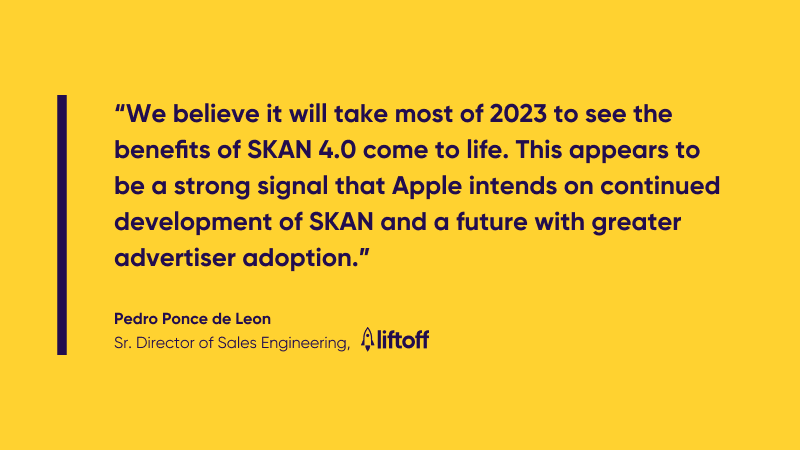
It’s our goal to arm our partners with the tools they need to not only leverage current SKAN capabilities but also ensure future readiness, helping them support their customers in achieving optimal performance and efficiency for iOS campaigns.
Here are our tips for ad networks to prepare for SKAN enhancements — both now and in the future:
- Adopt and upgrade to CV Schema Mapping API or Postback Macros. This helps ad networks understand the correlation between the conversion value they receive from Apple and actual user events performed on the advertiser’s app, and optimize their campaigns accordingly.
- Ensure that your integration with AppsFlyer’s SKAN solution is up-to-date. Follow the SKAN integration guide for ad networks or reach out to your AppsFlyer Partner Development Manager for assistance and guidance.
- Maintain deterministic data in reporting. As an unbiased measurement partner, AppsFlyer does not consume non-deterministic data from ad networks. Therefore, the more deterministic data an ad network provides AppsFlyer, the more distinctive it will be in our dashboard and reporting, compared to other ad networks.
- Take advantage of expanded options for campaign definition. The source identifier in SKAN 4.0 allows for greater granularity such as creative, channel, or ad/adset level with up to 10,000 options.
To stay well-prepared and adapt to SKAN 4.0 and any future changes, advertisers should:
- Update your AppsFlyer iOS SDK. In order to receive SKAN 4.0 data, advertisers must update their AppsFlyer SDK to v6.10+. Learn more here.
- Configure fine-grained and coarse-grained conversion values. Finding a way to mix coarse and fine grain in parallel can be tricky for marketers. We recommended trying several events to see which ones correlate best with LTV in the different windows.
- If you’re using one of our raw data solutions, update your raw data mapping. AppsFlyer has added new fields to its raw data reports, including ‘coarse-conversion-value’, ‘source-identifier’, and more. Learn more here.
As user privacy continues to take center stage in the iOS realm and in the mobile marketing industry at large, future iterations of SKAN are all but inevitable. AppsFlyer will be ready to adapt to any new changes that arise, to continue to support our ad network partners and customers in enhancing their measurement and optimization capabilities.




